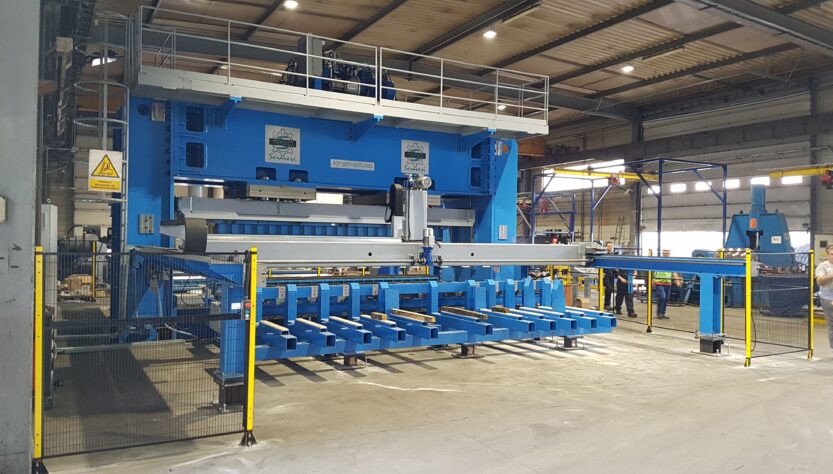In the world of metalworking and heavy fabrication, few machines are as essential—or as powerful—as the hydraulic press. This machine applies immense force with pinpoint accuracy, shaping everything from small components to massive steel plates. Whether forming, punching, deep drawing, or straightening, the hydraulic press is relied upon across countless industries for its versatility, reliability, and consistent performance. This article explores the key functions, benefits, and innovations behind the hydraulic press and why it continues to be a cornerstone of industrial manufacturing.
- What Is a Hydraulic Press and Why Is It So Widely Used?
- How Does a Hydraulic Press Improve Manufacturing Efficiency?
- What Are the Key Applications of a Hydraulic Press in Modern Industry?
- What Should You Look for When Choosing a Hydraulic Press?
- How Is the Hydraulic Press Evolving with Modern Technology?
1. What Is a Hydraulic Press and Why Is It So Widely Used?
A hydraulic press is a machine that uses a hydraulic cylinder to generate compressive force, allowing it to shape, mold, or cut materials with extraordinary precision. By using fluid pressure to create force rather than mechanical leverage, the hydraulic press offers smoother operation and greater control. This flexibility has made it essential in industries like automotive, aerospace, shipbuilding, and energy infrastructure. From forming sheet metal to assembling large machine parts, the hydraulic press offers the muscle and finesse required to get the job done right.
2. How Does a Hydraulic Press Improve Manufacturing Efficiency?
One of the biggest advantages of the hydraulic press is its ability to apply full force consistently across the entire stroke. This allows for more efficient forming of complex shapes without the need for multiple passes or rework. The hydraulic press also allows for rapid tool changes and automatic cycling, which reduces downtime and boosts throughput. With programmable controls and real-time pressure adjustments, this machine adapts on the fly to different tasks, materials, and part sizes—dramatically improving workflow in production settings.
3. What Are the Key Applications of a Hydraulic Press in Modern Industry?
The hydraulic press is used for a wide variety of tasks beyond traditional metal forming. It’s essential in laminating composite materials, molding plastic parts, compressing powders, and even producing ceramics or electronics components. In heavy industries, it’s often used to form tank heads, press flanges, or straighten large weldments. Its adaptability also makes it popular for maintenance and repair operations, where custom forming or component rework is often needed on demand. No matter the sector, the hydraulic press brings flexibility to high-precision processes.
4. What Should You Look for When Choosing a Hydraulic Press?
When investing in a hydraulic press, several factors should be considered to ensure it meets your operational needs. These include maximum tonnage, stroke length, bed size, cycle speed, and whether the press is single-acting or double-acting. Advanced features such as pressure control systems, digital interfaces, and safety interlocks can also make a big difference in productivity and operator confidence. Depending on the application, you may also want to look for customization options—such as heated platens or die cushions—that further optimize performance.
5. How Is the Hydraulic Press Evolving with Modern Technology?
Today’s hydraulic press is smarter and more connected than ever. With the integration of CNC controls, IoT sensors, and real-time data monitoring, operators can achieve unmatched levels of precision and repeatability. These innovations also allow for remote diagnostics, predictive maintenance, and easier integration with other automated systems. Many manufacturers now design presses with energy-saving technologies, such as variable-speed pumps, which reduce electricity usage and operating costs without sacrificing power. These modern capabilities ensure that the hydraulic press remains at the cutting edge of industrial manufacturing.
From shaping raw metal into engineered components to supporting mass production at global scale, the hydraulic press is an indispensable part of modern manufacturing. Its ability to combine raw force with exact control makes it a top choice across diverse applications and industries. With continued advancements in automation and efficiency, the hydraulic press is not only keeping pace with the demands of today—it’s shaping the future of industrial production. If your operations require reliability, flexibility, and forming power, investing in a high-performance hydraulic press is a decision that pays dividends for years to come.
